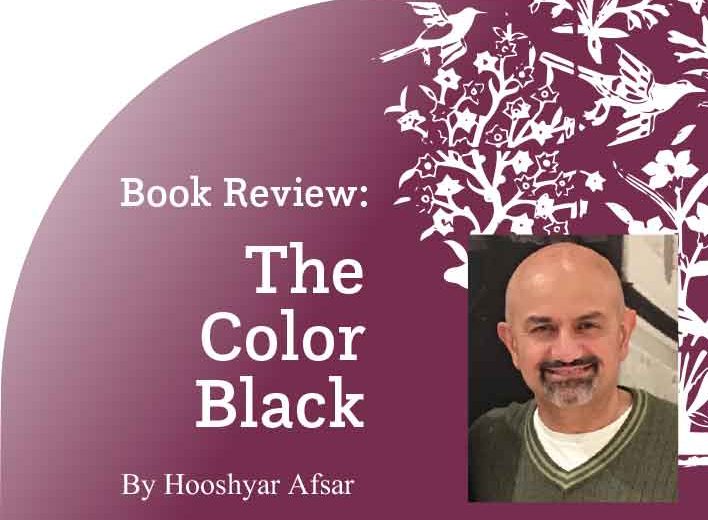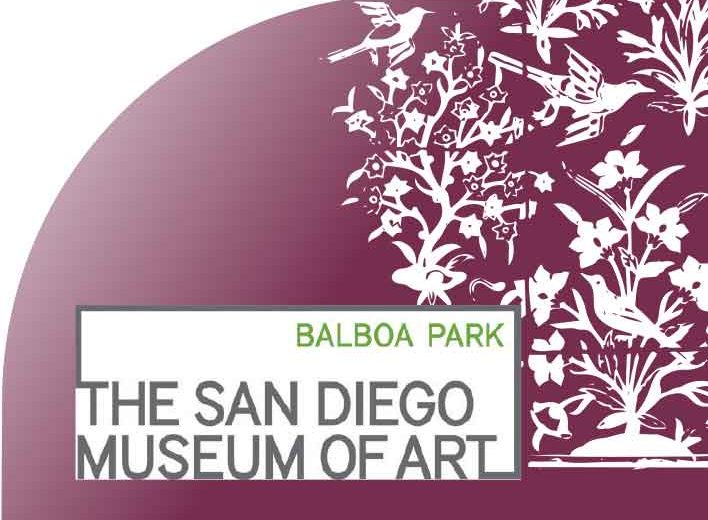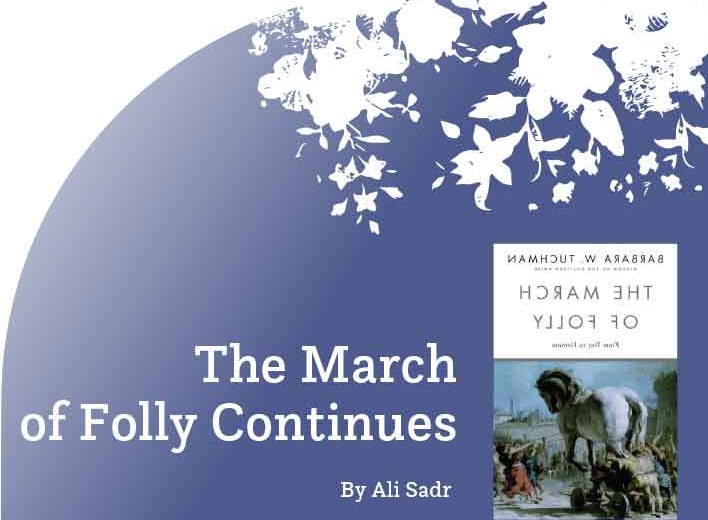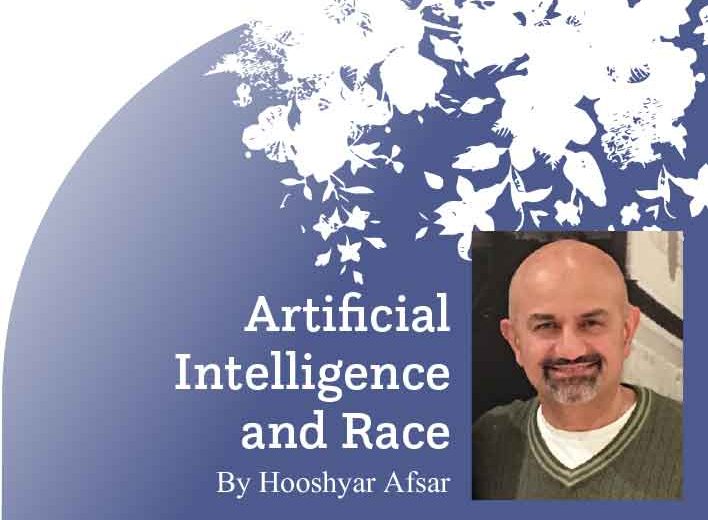Hooshyar Afsar
We are witnessing a peaceful revolution in America. How did we end up here? The short answer is that over 400 years of racial injustice—represented today in a brutal system of mass incarceration/mass deportation with policing as one of its strongest weapons—has come to yet another watershed moment. The spark was the publicly viewed lynching of George Floyd by Minneapolis police officers on May 25, 2020. Yet, the powder keg of social anger over the injustices of systemic racism in the U.S. has been growing in size for decades. Starting in March 2020, the boiling lava in the powerful American social volcano took a giant leap in size with the COVID-19 pandemic disproportionately killing Black and Brown people in the tens of thousands and leaving tens of millions unemployed. Conditions were ripe for an unprecedented eruption of racial justice protests when Derek Chauvin and three fellow officers murdered George Floyd with the cruelty of hunters squeezing the life out of their prey. Let’s pause and take a deeper look at how United States of America arrived at this moment of reckoning.
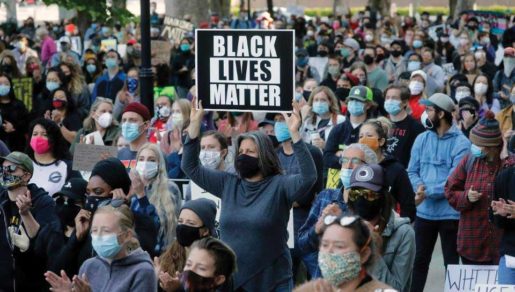
A Brief History of Economic Disenfranchisement
To shed light on the history of racism and economic disenfranchisement of Black people in the United States, I have provided an abridged set of historical turning points below. For more detailed information, please see the articles I wrote for Peyk #173 (My Journey Toward Racial Justice, available in both a Farsi and English version, with additional resources on the topic referenced) and more recently Peyk #187 (Race and Census). Please note that certain details about the following historical points are lost in the interest of being brief; the purpose is to entice the readers to make their own inquiries and consider various perspectives including the ones below.
- In 1492, three ships led by Portuguese slave hunter/trader Christopher Columbus and financed by the Spanish crown arrive at present day Bahamas and later Cuba and Hispaniola (Haiti and Dominican Republic) in search of gold. Enslavement of the Arawaks native people of these islands by Columbus and his successors, along with violence and disease brought by Europeans, completely eliminates them from the face of the earth. European arrival in the Americas starts and continues with the genocide of millions of native people for centuries.
- Colonialism grows with the rise of Europe in the sixteenth and seventeenth centuries and Enlightenment pioneers such as Voltaire, Locke, Newton, and Kant develop the concept of “Whiteness” as the symbol of racial superiority, beauty, and intellect. Race, racism and White supremacy become the justification for the enslavement of African people to build and expand the colonies primarily in the Americas.
- The first African slave ship arrives in Jamestown, Virginia, in August 1619, starting a prolonged history of racial injustice against people of African descent in North America that continues today in different forms.
- After decades of conflict with the British crown over taxation and in search of freedom to trade and expand their wealth, White male leaders and plantation/slave owners of the thirteen American colonies declare independence from Britain on July 4, 1776.
- A majority of the new country’s founders agree that slavery is needed for the economies of the slave-holding states. Avoiding the use of the terms “slave” or “negro,” the 1787 Constitution of the United States stipulates counting the slaves as 3/5 of “free men” for purposes of census.
- Conflict over slavery finally results in the cessation of southern slave-holding states in 1861 and the start of the American Civil War.
- With the surrender of the Confederate Army in 1865, the Civil War effectively ends. The U.S. Congress passes and states ratify the 13th, 14th, and 15th amendments to the U.S. Constitution, rendering slavery illegal, granting full citizenship to the freed slaves, and safeguarding their right to vote.
- Lincoln is assassinated in 1865 and his order of distributing land to the freed slaves, known as “forty acres and a mule,” is reversed. Economic justice for 4 million freed slaves does not materialize.
- The Union Army leaves the south in 1877, resulting in a regime of racial terror led by thugs of the Ku Klux Klan along with a set of racist laws that put in place practices of convict leasing similar to slavery.
- A new system of racial and social control known as Jim Crow segregation is put in place in all the Southern states through legislation, starting with the “Mississippi Plan” of 1890. All facets of life are segregated in the South to push African Americans into a life of economic, social, and political disenfranchisement, supported by the terror of lynch mobs.
- After decades of struggle by the Civil Rights movement, Jim Crow segregation finally comes to an end with the passage of the Civil Rights Act of 1964 and the Voting Rights Act of 1965.
- White liberals of the North start to abandon the Civil Rights movement and its most prominent leader, Dr. Martin Luther King, Jr., when he starts organizing for economic justice.
- King is assassinated in Memphis in April 1968, followed by the election of Nixon as president in November and brutal police terror against progressive blacks. The coalition consisting of Civil Rights and anti-Vietnam War movements begins to disintegrate.
- Nixon’s election campaign’s reliance on a “Law and Order” crusade is continued with Reagan’s “War on Drugs” (that is later pursued by the Bush and Clinton administrations) and further augmented by mass deportations and family separations in the Obama years (that is further intensified by the Trump administration). A new system of social and racial control—namely Mass Incarceration/Mass Deportation—is born, heavily relying on the police and the criminal justice system.
- On the eve of the COVID-19 outbreak in 2020, one in five prisoners in the world (21%) are incarcerated in the United States, a country that has less than 6% of the world population. African Americans make up 40% percent of people in U.S. prisons while they only constitute 13% of the U.S. population. The wealth gap intensifies, with the Pew Research Center reporting in 2016 that Black families’ median wealth is 1/10th that of White families.
COVID-19 and Economic Downturn Takes the Hidden Crisis to a New Level
Centuries of little or no opportunity for African Americans have forced the majority of them into low wage service industry work. As a result, the COVID-19 pandemic has either put them in the direct path of harm or has left them at home with no employment due to lockdowns.
The pandemic has also stripped naked health disparities along racial lines. Centuries of discriminatory economic and environmental policies have resulted in high rates of obesity, diabetes, and high blood pressure in African Americans, making them more susceptible to COVID-19.
The pandemic fatalities in Black communities are horrifying. According to the Center for Disease Control (CDC), African Americans constitute 23% of U.S. COVID-19 deaths (again while only constituting 13% of the total U.S. population). Recent data published by APM Research on June 10, 2020, shows that the African American COVID-19 death rate is 2.3 times higher than that for Whites or Asians. Same report states that if Blacks had died from COVID-19 at the same rate as Whites—in other words, if we had racial and economic parity—at least 14,400 Black Americans would still be alive today.
COVID-19 has also ravaged through prisons and jails. On June 16, 2020, New York Times reported that over 68,000 inmates in the United States have tested positive and over 600 inmates and prison workers have died from the disease. With over 60% of prisoners in the U.S. belonging to Black and Brown communities, there is no doubt that they also share a disproportionate percentage of COVID-19 deaths in prisons.
Black Lives Matter Gains a New Level of Influence
Since the murder of George Floyd, millions of people have demonstrated across the U.S. and the world. The absolute majority of protests have been peaceful. The Trump administration’s attempt to coin the movement organizers as “terrorists” has not taken hold in American public opinion; the latest polls show that over 70% of Americans support the Black Lives Matter movement. Defunding and even abolishing the police has either been taken up by major city governments such as Minneapolis or is being seriously discussed or considered. The size, diversity, and energy of the movement is unprecedented. Young White Americans are also showing up for racial justice—not just in major American metropolises, but in medium and small size cities all across the United States. So, where is the Iranian American Community with regards to this movement and how could or should our community respond and/or participate?
Iranian Americans and the Black Lives Matter Movement
While there are no clear surveys and/or statistics showing what our community thinks about Black Lives Matter (BLM) movement, there is support for the movement and participation in various forms by second generation Iranian Americans. A group of young Iranian Americans has started “Iranian Americans for Black Lives” and their initial pamphlet is encouraging us to educate ourselves on the history of racism in the United States and support the movement. They have raised many points, such as the history of slavery in Iran, passing as White by Iranians who look White, the “Aryan” myth, racism and anti-Blackness in our community, and how Iranian Americans have benefited from the struggle of anti-racist movements in the United States.
Iranian Americans might be in one of several places when it comes to the BLM in particular and the racial justice movement in general.
Many of us may think that Iranians share a racial heritage with White Europeans, and hence with White Americans, by assuming that our “Aryaie” heritage is the same as the “Aryan Race.” Along the same lines, many of us might think that Iranians are somehow superior in intellect and culture to other nationalities, ethnicities, or races. If we think that we are “superior,” we might think that Blacks are somehow or another inferior to Whites. Even if we don’t go that far, we might think that Blacks are responsible for their plight because they are somehow lazy and/or stupid. Finally, some people in our community may say that they like to be White, identifying that with more power and privilege. The fact that in 1978, the U.S. government began to recognize Iranians (and Arabs) as White could also feed our tendency to consider ourselves White. So, let’s take each one of these thoughts or arguments and try to shed some light on them from historical and scientific perspectives.
Before we start, I want to emphasize that my own personal journey toward racial justice in the past few years has taught me that I have had racist ideas, too. As I study, discuss, and learn, I continue to discover new angles. So, there is no shame in such discoveries as many of us have had to “drink from the fire hose” of the U.S. racial injustice history as recently as in the past few weeks.
As far as sharing a heritage with the White Europeans is concerned, let’s see what historians and sociologists tell us. According to professor Neda Maghbouleh, author of The Limits of Whiteness, Iranian Americans and Everyday Politics of Race and Encyclopedia Iranica, the term “Arya” was used to refer to certain groups of nobility in ancient Iran. The term “Aryan,” again according to Encyclopedia Iranica, had more of a linguistic connotation and meant people who spoke ancient Iranian and Indian languages. The historical notion that “Aryaie Tribes” moved from present day Siberia in three groups escaping the Ice Age and looking for warmer lands—one group going to present day India, one moving to present day Iran, and the third one moving to Europe—has some truth, but for the most part it is more of a story book notion with not much historical evidence or temporal congruency. Citing multiple sources, Professor Maghbouleh argues that the story of “Aryan Race“ having anything to do with the term “Arya” was invented during Reza Shah, by homegrown Orientalists such as Hassan Pirnia who wanted to somehow link the European racialists’ thinking about the Aryan race with Iran. Later, with the rise of the National Socialists and Hitler in the 1930s, who promoted White supremacy and the “purity” of the “Aryan Race,” it became plausible for Reza Shah to sympathize with the Third Reich. Hitler openly praised the system of Jim Crow segregation in the American South. I understand that it is difficult to pop the bubble for many of us by saying this, yet “Iran as land of Aryans” is a myth invented to link our heritage with Europeans in pursuit of reviving the long-lost grandeur of the Persian Empire. The tribes who moved to present day Iran thousands of years ago could not be considered White since Whiteness was invented during the age of “Enlightenment” in Europe. Let’s ask ourselves as people of Iranian heritage, do we want to identify with Hitler, his Nazi Party, and Southern segregationists by clinging to the Aryan myth?
Next comes the notion of Iranian exceptionalism, the idea that Iranians are the “smartest” people on the planet and are somehow better in many ways from other nationalities, races, or ethnicities. If there were any scientific doubts in the past, with the conclusion of the Human Genome project in the year 2000, there is now undeniable scientific evidence that human beings, otherwise known as Homo sapiens, share approximately 99.98% of their DNA with each other. Simply put, no race, ethnicity, or nationality has a biological superiority over any other. We have every right to be proud of our heritage and our contributions to the human civilization in many different ways. Yet, that does not make us exclusive or superior. We could build on our heritage and culture by sharing our accomplishments with all the humanity and learning from all other cultures in return.
Some of us may say, okay, I agree, yet if the American government tells me I am White, why should I disagree? Doesn’t that put me in an advantageous position? The answer is no, it doesn’t. It is important to acknowledge that a lot of official U.S. government verbiage to identify people from the “Middle East,” including Iranians and Arabs, as White is confusing and contradictory. Up until 1978, this designation did not exist. In fact, Professor Maghbouleh documents multiple cases where different people used their ancestry connection (or lack thereof) to Iranian heritage to prove Whiteness in American courts successfully or unsuccessfully. As I noted in another article on Census 2020 (see Peyk #187), promoting the notion of Iranian Whiteness is a double whammy. It deprives our community of an accurate count that has many practical ramifications, including services at different levels of government. Along the same lines, it eliminates the possibility of using the provisions in the U.S. Federal code that minority communities (e.g., Asian, South Asian, African, Hispanic) utilize to enhance their status. Second, it disarms us in defending ourselves against discrimination as shown by unsuccessful lawsuits by Iranians who were openly discriminated against in the United States. The Moslem Ban (that statistically should really be called the Iranian Ban) is only one example of how discriminatory policies negatively impact our community by stopping the flow of new immigrants joining our ranks. Considering the events of the last few years, there could be similar policies against the rights of our community in the future.
How do I think our community should respond to the Black Lives Matter movement? There is historical evidence that expansion of freedom and civil rights in the United States also helped establish new safeguards for the rights of immigrants. A few months after the passage of the Voting Rights Act of 1965, Congress passed the Immigration and Nationality Act of 1965, abolishing the race-based immigration quota system and replacing it with a system that prioritized refugees, people with special skills, and those with family members living in the United States. Undoubtedly, those provisions have directly helped the growth of the Iranian American community. As such, there is a strong possibility that the success of the Black Lives Matter movement will contribute to the enhancement of immigrant rights in this country. Our participation and support for this movement will increase that possibility.
Where will the U.S. go from here?
The U.S. movements for racial justice to achieve a real democracy with equal economic opportunity for all citizens has been dwarfed many times by pernicious actions of proponents of White supremacy and racism. Systems of social and racial control have mutated so that racism survives and keeps the essence of White supremacy in place. The racial justice movement will continue with its own ebbs and flows. Let’s not forget that slavery—with all its perceived invincibility—was defeated, Jim Crow segregation was overturned, and today the Black Lives Matter movement has gained popular support. Michelle Alexander, author of New Jim Crow: Mass Incarceration in the Age of Colorblindness, reminds us that there is no inevitability to the history of racial injustice in the United States. Humanity has always had the power of choosing how to proceed. While we have our own share of injustices throughout our history that continues to hunt us today, if our ancestors paid laborers over 2000 years ago to build the Persepolis, Europeans could have chosen a path other than slavery and genocide of Native People in the Americas. As Iranian Americans, we have a choice, too. We can choose to have a commitment to social justice, human rights, economic equality, and true democracy as “one person, one vote.” We can stand in solidarity with African Americans and all Peoples of Color. Perhaps, such a commitment could be justified as something much bigger than a humane gesture. Perhaps, it is a necessity, a commitment that will empower us to find our deserved place among all human communities.
Hooshyar Afsar is one of the founders of Racism Awareness Project (RAP), an educational program on history of and present-day racism in the United States and its impact on Iranian American Community. RAP has had a variety of educational forums across the United States. Mr. Afsar has written several articles and book reviews on the topic for Peyk and other publications. He can be reached at hoosh.afsar@rapusa.org.


